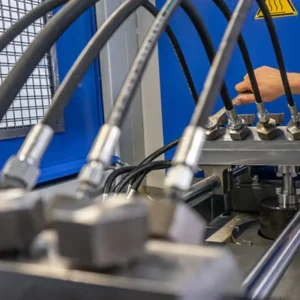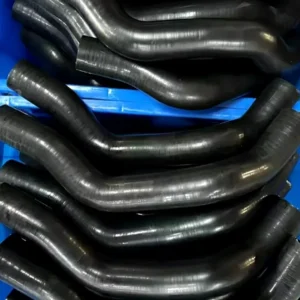In the automotive and industrial applications, we often face the need to transfer fluids, and gasoline is one of the most common fluids. A common question arises: Can hydraulic hoses be used to transfer gasoline? This question seems simple, but it actually involves many aspects of knowledge such as material chemistry and fluid mechanics. The wrong choice may lead to serious consequences such as leakage and fire. Next, we will deeply analyze the key factors and provide you with a clear and accurate answer.
What is Hydraulic Hose
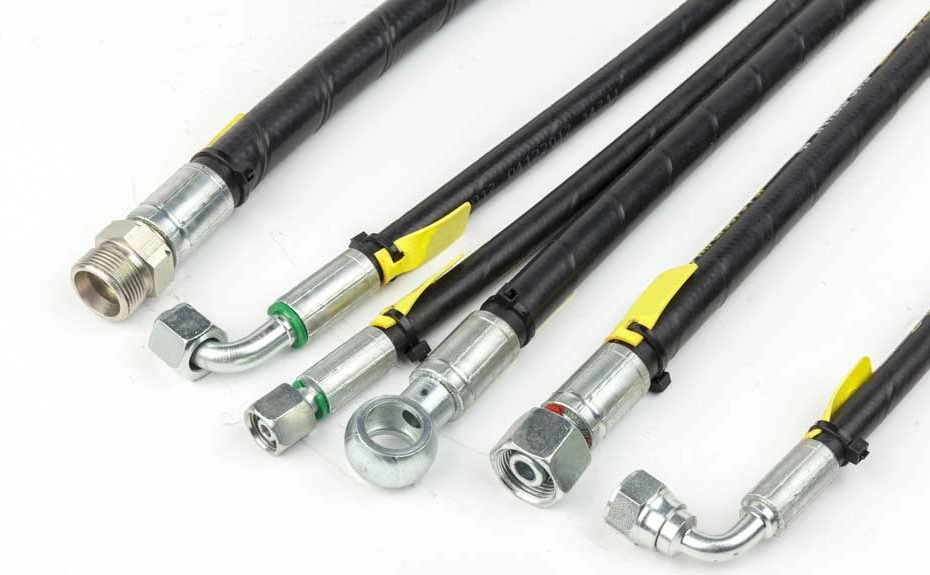
Hydraulic hoses play a crucial role in various machinery. They are designed to transfer hydraulic fluid under high pressure, enabling the smooth operation of hydraulic systems. These hoses are typically made from a combination of materials, including rubber, synthetic polymers, and metal reinforcements. The inner tube of a hydraulic hose is engineered to resist the corrosive nature of hydraulic fluids, which are often specifically formulated for their intended applications.
Hydraulic hoses consist of multiple layers. The inner tube, which comes into direct contact with the fluid, is usually made of materials like nitrile rubber. Nitrile rubber is known for its excellent resistance to oils, which is a key property for hydraulic fluids. However, gasoline has different chemical properties compared to hydraulic fluids.
The reinforcement layers in hydraulic hoses, often made of braided or spiral-wound metal wires or synthetic fibers, provide strength and flexibility. These layers help the hose withstand the high pressures generated in hydraulic systems. But again, when considering gasoline transfer, we need to assess how these materials interact with gasoline.
What is Gasoline
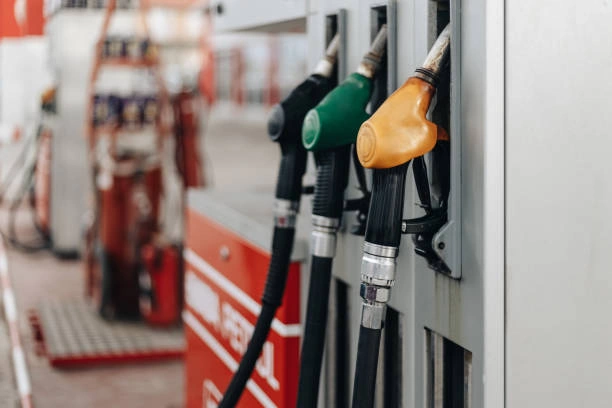
Gasoline is a volatile and highly flammable liquid. It has a complex chemical composition, with various hydrocarbons and additives. When it comes to transporting gasoline, safety is of utmost importance. Gasoline requires hoses that can resist its solvent-like properties and prevent any leakage.
Gasoline contains a mixture of hydrocarbons such as alkanes, alkenes, and aromatics. Some of these components can act as solvents, which means they have the potential to break down certain materials over time. Additives in gasoline, like ethanol in some fuel blends, can also affect the compatibility of hoses. Ethanol, for example, is known to be more corrosive than pure gasoline in some cases.
Leaks in gasoline hoses can lead to extremely dangerous situations, including fire and explosion hazards. The hoses used for gasoline transfer must be able to maintain integrity under different conditions, including temperature variations and mechanical stress. Any potential hose for gasoline transfer needs to meet strict safety standards to ensure the safe handling of this volatile fuel.
Can Hydraulic Hose Be Used for Gasoline
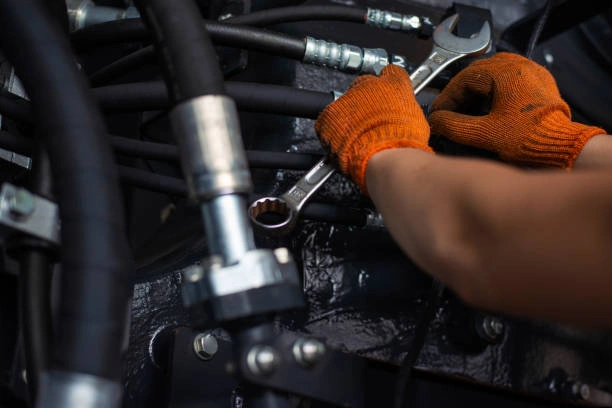
When considering a hose for gasoline, the primary concern isn’t just pressure, but material compatibility. Gasoline is a potent solvent, and it reacts differently with various rubber compounds and plastics.
A standard hydraulic hose is primarily designed to handle hydraulic fluids, which are typically petroleum-based oils, but often contain additives that differ significantly from those found in gasoline. The inner tube of a hydraulic hose might not be formulated to resist the corrosive effects of gasoline, especially over time. This can lead to a breakdown of the hose material, causing it to swell, crack, or even delaminate.
Such degradation not only compromises the integrity of the hose, leading to potential leaks, but also contaminates the fuel system with degraded rubber particles, which can clog fuel filters and injectors.
Furthermore, the operating conditions for gasoline lines differ from many hydraulic applications. Gasoline systems often operate at lower pressures but require excellent chemical resistance and low permeability to prevent vapor loss and odor.
While some specialized hydraulic hoses might offer limited gasoline resistance, it’s not their primary design purpose. Using a hose not specifically rated for fuel transfer also poses significant safety risks, including fire hazards due to leaks or material failure. For gasoline applications, it’s always best to use hoses explicitly designed and labeled for fuel, often identified as “fuel hose” or “SAE J30R” ratedalternative, it’s a compromise that could lead to costly and dangerous failures down the line.
What Type of Hose is Used For Natural Gas Hose?
For natural gas applications, the type of hose used is crucial for safety and performance. Unlike hydraulic hoses, which are designed for high-pressure oil, natural gas hoses must be chemically resistant to the gas itself and often need to accommodate lower pressures while preventing leaks and ensuring a safe flow
| Hose Type | Common Applications | Key Advantages | Key Disadvantages |
| Hydraulic Hose | Heavy machinery, power steering | High pressure, durable | Not for fuel/gas, chemical specific |
| Fuel Hose | Gasoline, diesel, ethanol blends | Chemical resistance, flexible | Pressure limited, specific ratings |
| Natural Gas Hose | Residential gas lines, appliances | Gas compatibility, safety ratings | Specific for gas, not universal |
What Are Hydraulic Hoses Used For
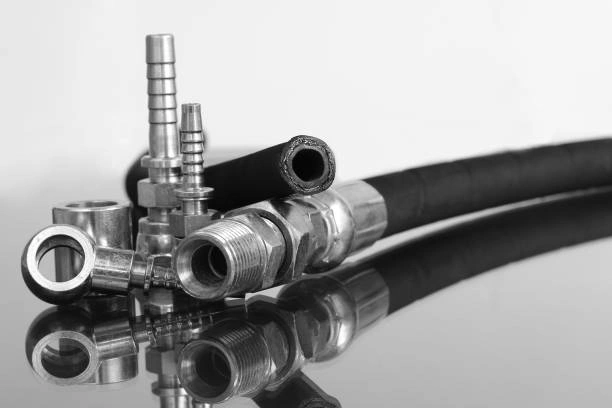
Hydraulic hoses are the workhorses of fluid power systems, primarily used to transmit pressurized hydraulic fluid—typically oil—between various components like pumps, valves, cylinders, and motors. Their robust construction, often involving multiple layers of rubber, thermoplastic, and steel wire reinforcement, allows them to withstand extreme pressures and temperatures.
- Construction: Powering excavators, bulldozers, cranes, and other heavy machinery for digging, lifting, and moving.
- Agriculture: Enabling the operation of tractors, harvesters, and sprayers for tasks like steering, lifting, and controlling attachments.
- Manufacturing: Driving hydraulic presses, injection molding machines, and robotic arms on assembly lines.
- Mining: Essential for drill rigs, hydraulic shovels, and other equipment operating in harsh, high-pressure environments.
- Automotive: Found in power steering, braking systems, and suspension in vehicles.
Wherever mechanical forces need to be generated and controlled through fluid power, hydraulic hoses are the key flexible connection that makes it all possible.
What Kind of Hose is Safe for Gasoline?
For gasoline, you absolutely need a hose specifically designed for fuel transfer. These hoses are engineered to resist the corrosive effects of gasoline, including ethanol blends, and prevent permeation (vapor leakage) that can lead to odors and safety hazards.
Look for hoses that meet SAE J30R standards. This is the widely accepted specification for automotive fuel and oil hoses. Different subclasses within J30R exist for various applications:
- SAE J30R7: Common for carburetor-based fuel systems, suitable for lower pressures (up to around 50 psi).
- SAE J30R9: Designed for fuel injection systems, capable of handling higher pressures (up to 100 psi or more).
- SAE J30R10: For in-tank, low-pressure applications.
Materials like Nitrile Rubber and sometimes specific PVC compounds (for lower pressure, smaller engines) are used for the inner tube due to their chemical resistance. For ultimate durability and low permeation, PTFE-lined hoses with a braided exterior are an excellent, albeit more expensive, choice, especially for modern vehicles and high-performance applications. Always check the hose itself for the appropriate SAE rating and ensure it’s explicitly stated as safe for gasoline.
What is the Difference Between Hydraulic Hose and Gas Hose
Hydraulic hoses and gas hoses are both used to move fluids, with the fundamental difference between them being the type of fluid being moved, the pressure, and, crucially, the materials used to ensure chemical compatibility and safety.
Hydraulic hoses are designed for high-pressure fluid transfer. They move hydraulic fluids (usually petroleum-based or synthetic) to drive heavy machinery. Their construction emphasizes strength to withstand the enormous pressures, often with multiple layers of braided or spiraled steel wire reinforcement embedded in synthetic rubber or thermoplastics. The inner tube is specially formulated to resist degradation from the hydraulic fluid and withstand the high temperatures generated during operation.
Gas hoses are designed to safely move gases such as natural gas, propane, or oxygen. The main concern here is not just the high pressure (although some hoses can withstand that), but preventing gas permeation and ensuring chemical resistance to the specific gas being moved. Gas molecules are much smaller than liquid molecules, which makes them more susceptible to penetrating incompatible materials. Gas hoses, especially those used to move fuels such as propane, often feature special liners (e.g., nitrile rubber, polytetrafluoroethylene) that are extremely impermeable to gases and resistant to the chemical components of the fuel. For natural gas, flexible metal hoses (CSST) are very common due to their inherent impermeability and durability. Some gas hoses may even have “perforations” in the outer layer to allow any trace amounts of permeating gas to escape safely, preventing blistering.
While hydraulic hoses prioritize high liquid pressure and oil compatibility, gas hoses prioritize gas impermeability, specific chemical resistance, and different safety standards for different gas media. Mixing one type of hose with another can result in dangerous failures such as incompatible materials, insufficient media pressure ratings, or gas leaks.
Conclusion
In summary, while hydraulic hoses are essential to hydraulic systems, they are not typically suitable for gasoline transfer. The chemical properties of gasoline and its special requirements for safe transfer make it necessary to use fuel-specific hoses or hoses designed specifically for gasoline transfer. By understanding the difference between hydraulic hoses and gasoline-compatible hoses, and following the correct maintenance and replacement procedures, you can ensure safe and efficient transfer of gasoline in your application.
Safety is always a top priority when transferring gasoline. Therefore, choose the right hose, inspect it regularly, and replace it as needed to avoid any potential hazards.

